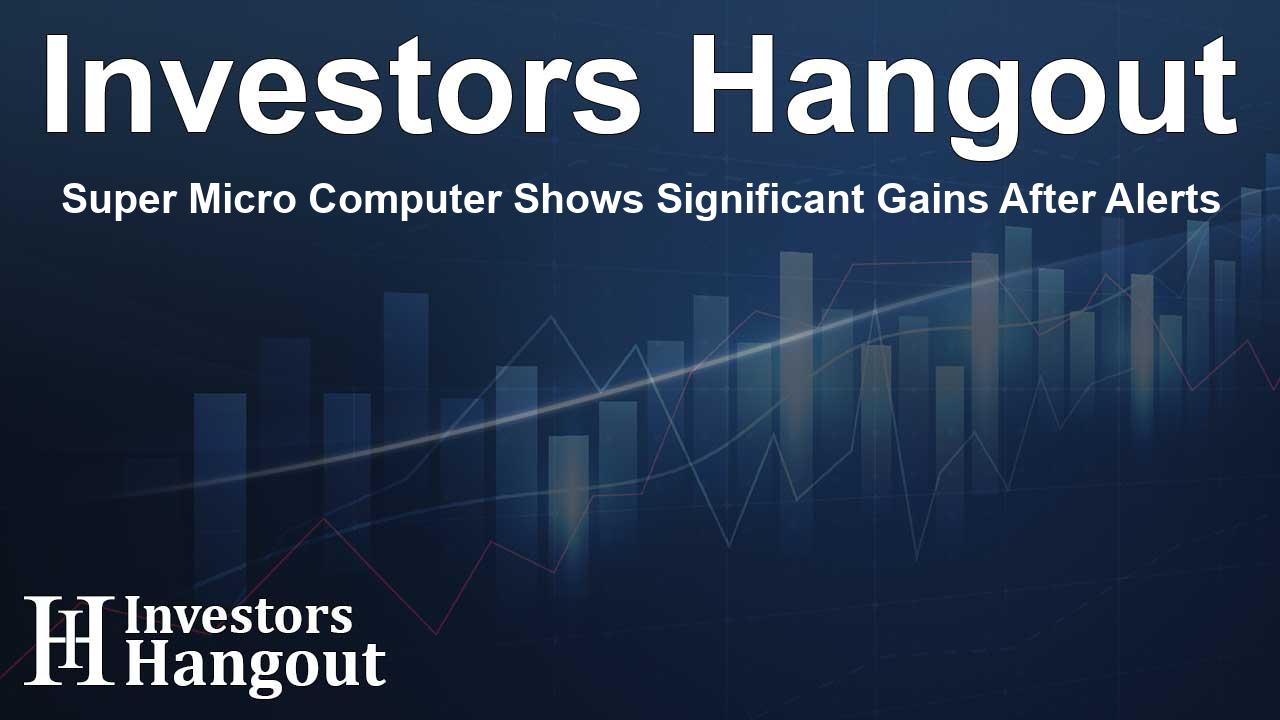Super Micro Computer Shows Significant Gains After Alerts

Super Micro Computer Experiences a Notable Rise
Super Micro Computer (NASDAQ: SMCI) has recently demonstrated a remarkable increase of 6.2% in response to a Power Inflow alert from TradePulse. This recent surge is a positive sign indicating a shift in market dynamics and investor sentiment towards the company.
Understanding Power Inflow Signals
The Power Inflow alert suggests that institutional investors are increasingly interested in streaming into SMCI. This changing tide from selling to buying illustrates a reinvigorated confidence among investors and possible upward price momentum.
Market Reaction
Following the alert that registered a Power Inflow at a price point of $419, SMCI achieved impressive intraday gains, reaching a peak of $445. This upward movement translates to an approximate increase of 6.2%, showcasing the potential effectiveness of monitoring such alerts for navigating the stock market.
The Significance of Power Inflows in Trading
Power Inflows play a crucial role as they act as early indicators of potential uptrends, allowing traders to position themselves before broader market movements take hold. These signals often signify greater buying pressure from institutional investors than from retail traders, presenting opportunities for strategic entry into trades.
Recognizing Entry Points
When a Power Inflow is noted, it can be interpreted as a promising entry point for traders. Confirming this trend using additional metrics from TradePulse, such as Momentum or large-scale deal flows, can lend further credibility to the trend and assist in decision-making.
Taking Action After a Power Inflow
Capitalize on trading opportunities by acting swiftly upon receiving a Power Inflow alert. Setting strategic stop-loss orders and profit targets is essential in managing risks and maximizing potential returns. With a thoughtful approach, traders can effectively align their strategies with real-time market conditions.
Market Performance After the Alert
The Power Inflow alert indicated that the stock price at the time was $419, with strong returns following the alert; the high price reached $445 and closed at $443.45. These insights underscore the importance of having a well-crafted trading plan that reflects both profit expectations and risk tolerance, even in fluctuating markets.
Frequently Asked Questions
What does the Power Inflow alert signify?
A Power Inflow alert indicates increased institutional buying, suggesting a potential trend reversal in the stock's performance.
How did SMCI perform after the alert?
Following the alert, SMCI rose significantly, achieving a peak of $445, corresponding to a 6.2% gain.
Why are Power Inflows important for traders?
Power Inflows provide insight into potential market trends, enabling traders to make timely and informed decisions.
What should traders do after receiving a Power Inflow alert?
Traders should consider using the alert as an entry point and confirm the trend through additional indicators for informed decision-making.
How can strategic trading plans be set?
Establishing clear profit targets and stop-loss levels based on personal risk tolerance is crucial for effective trading after receiving alerts.
About Investors Hangout
Investors Hangout is a leading online stock forum for financial discussion and learning, offering a wide range of free tools and resources. It draws in traders of all levels, who exchange market knowledge, investigate trading tactics, and keep an eye on industry developments in real time. Featuring financial articles, stock message boards, quotes, charts, company profiles, and live news updates. Through cooperative learning and a wealth of informational resources, it helps users from novices creating their first portfolios to experts honing their techniques. Join Investors Hangout today: https://investorshangout.com/
Disclaimer: The content of this article is solely for general informational purposes only; it does not represent legal, financial, or investment advice. Investors Hangout does not offer financial advice; the author is not a licensed financial advisor. Consult a qualified advisor before making any financial or investment decisions based on this article. The author's interpretation of publicly available data shapes the opinions presented here; as a result, they should not be taken as advice to purchase, sell, or hold any securities mentioned or any other investments. The author does not guarantee the accuracy, completeness, or timeliness of any material, providing it "as is." Information and market conditions may change; past performance is not indicative of future outcomes. If any of the material offered here is inaccurate, please contact us for corrections.